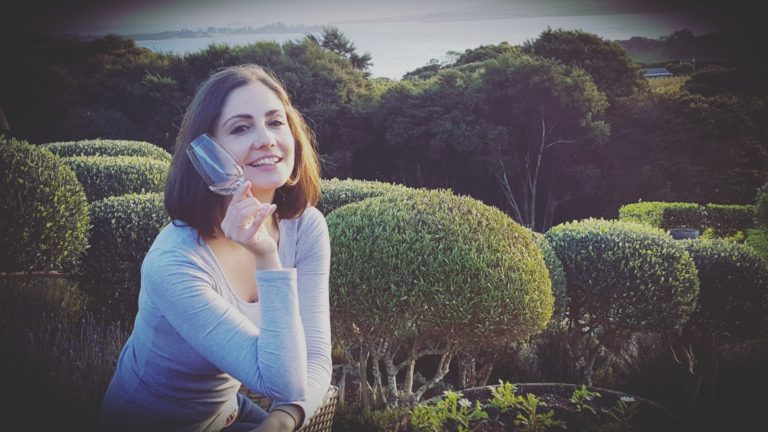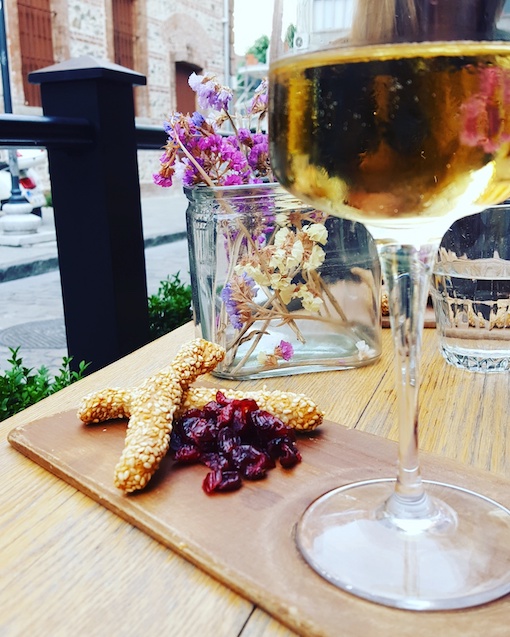Things good to know
Climate
Climate refers to a specific pattern of phenomena (sunlight, rainfall, temperature) that is observed throughout the year, for several years. When it comes to vine growing, the climate and average temperature cover the growing season Spring-Summer-Autumn.
A guideline to determine the climate has as follows:
Cool: average temperature 16.5° C and below
Moderate: average temperature 16.5° C to 18.5° C
Warm: average temperature 18.5° C to 21° C
Hot: average temperature 21° C and above

For a place on earth
In order for a vine to successfully grow, it doesn’t really need much; not much water, not much sun, not much nutrients on its soil. Pretty low profile, yes, but what it does require is a good and appropriate balance of the above.
Geography seems to be playing an important role when it comes to picking a vineyard site; Latitudes between 30° to 50° north and south of the Equator are usually preferred, because of their distance from the poles that are colder and the Equator that is hotter.
But how about if a vineyard is closer to the Equator, but in higher altitude or affected by cold ocean streams? Yes, it is possible. Take Argentina for example, and the region Cafayate where vineyards can be found up to a 3000-metre elevation.
The famous and sought after Terroir, therefore, plays an important role when trying to understand a wine and its expressions.
Terroir (/tɛˈrwɑːr/, French: [tɛʁwaʁ]; from terre, “land”) represents a specific place and the taste it can give to the vines growing there.
Aspects like: weather – rainfall, wind, fog and cloud cover, daytime/nighttime temperature, soil – drainage, fertility, terrain – orientation, elevation, low-lying areas, large bodies of water.
Serving at the appropriate temperature*
- Sweet wine
6°-8° C (43°-45° F)
- Sparkling wine
6°-10° C (43°-50° F)
- Light/Medium body white wines
7°-10° C (45°-50° F)
- Medium/Full body oaked white wines
10°-13° C (50°-55° F)
- Light body red wines
13° C (55° F)
- Medium/Full body red wines
15°-18° C (59°-64° F)
*Understanding wines: Explaining style and quality – WSET Level 3 Award in Wines

Keep it safe and sound…
As I always say, wine is a living organisation needing love and affection.
The proper storage condition will make your wine live longer and/or even develop further, mature and mellow certain characteristics, like tannins and acidity.
Temperature is probably the most important condition to be noticed. Normal average room temperature (nowadays) is far too warm for a wine and can make it break down or get oxidised easily and rapidly.
A temperature of 10-12° C (50°-55° F) is considered ideal for the wine to start maturing and developing a maximum complexity. Vital is the stability of this temperature, as increasing or lowering it too fast and too often can ruin the wine. Fluctuating temperatures can cause expansion and contraction of the cork that will eventually let air enter the wine.
Humidity is another key factor to consider when storing wine long term. Too low of humidity levels can dry out the cork, allowing air to enter. Too high of humidity levels can increase the possibilities of mould. A humidity range of 50-70% is ideal.
Exposure to Light should be avoided, as this can heat the wine and make it develop off flavours. Complete darkness is the ideal atmosphere.
The closure of the bottle can determine the best way to Positioning it in its storage. Traditional cork sealed bottles should be stored on their side. This will keep the cork in contact with the wine and it will keep it from drying out. Bottles with as screw cap can be stored standing up.
Once you have decided to keep a bottle stored for further ageing, any unnecessary Movement or Vibration should be avoided. Movement can cause vigorous disturbance to the sediment (if any) and quick oxidisation.
Not all wines develop into better with time.
All wines are ready to drink upon release for sale. However, there are certain components that can give indications for potential further development. Beneficial development!
Those indications can be:
Tannins: Grape varieties like Cabernet Sauvignon, Merlot, Cabernet Franc produce wines with high concentration of flavours and tannins. At youth may be more astringent, and tight, while ageing will mellow down the tannins offering a velvety texture, that is more pleasant for most.
Acidity: The higher the acidity, the more resistant the wine can be to developing harmful bacteria. Nonetheless, acidity can be a good antioxidant agent, helping the wine maintain its freshness and develop elegant aromas with time.
Sugar: Sugar is a natural preservative and the higher its level (g/L) in a wine the longer that can be preserved and further develop. Think of a Sauternes, combining high acidity and high sugar.
Personal preference: At the bottom line, your personal preference will always counterpart all reasons. If you got excited with your new promising bottle, open it up and enjoy it!
...or drink it now
The bottles of wine that are for short term consumption need no less care and affection.
Keeping your bottles away from heat (so the kitchen might not be the best location), direct sunlight and extreme cold, will guarantee the best quality for your wine, even when stored for just few days.
What do you mean there’s still wine in the bottle?
In the unprecedented event there’s still wine in your bottle and you call it a day, you can preserve it for up to 3 days in your fridge. For better results, use a vacuum stopper so that the wine has minimum air exposure.
Alternatively, make it vinegar and treat your recipes with something priceless.
